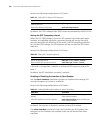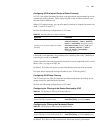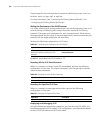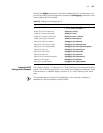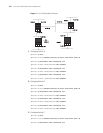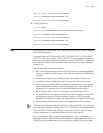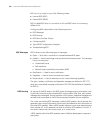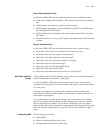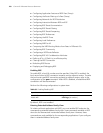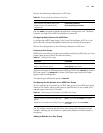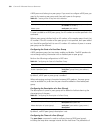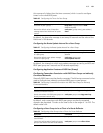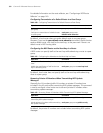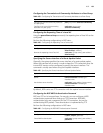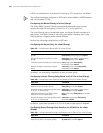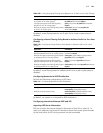
128 CHAPTER 5: IP ROUTING PROTOCOL OPERATION
■ Configuring Application Features of BGP Peer (Group)
■ Configuring the Route Filtering of a Peer (Group)
■ Configuring Networks for BGP Distribution
■ Configuring Interaction Between BGP and IGP
■ Configuring BGP Route Summarization
■ Configuring BGP Route Filtering
■ Configuring BGP Route Dampening
■ Configuring BGP Preferences
■ Configuring the BGP Timer
■ Configuring Local Preferences
■ Configuring MED for AS
■ Comparing the MED Routing Metrics from Peers in Different ASs
■ Configuring BGP Community
■ Configuring a BGP Route Reflector
■ Configuring BGP AS Confederation Attributes
■ Defining ACLs, AS Path List, and Route-policy
■ Clearing the BGP Connection
■ Refreshing BGP Routes
■ Displaying and Debugging BGP
Enabling BGP
To enable BGP, a local AS number must be specified. After BGP is enabled, the
local router listens to BGP connection requests sent by adjacent routers. To make
the local router send BGP connection requests to adjacent routers, refer to the
configuration of the peer command. When BGP is disabled, all established BGP
connections will be disconnected.
Perform the following configurations in system view.
By default, BGP is not enabled.
Entering Extended Address Family View
To initiate multicast applications with BGP, you must enable BGP and enter the
corresponding extended address family view. Some commands available in BGP
view can also be executed in extended address family view. However, these
commands are only available for the corresponding applications if you configure
them in extended address family view.
Table 89 Enabling/Disabling BGP
Operation Command
Enable BGP and enter the BGP view bgp as-number
Disable BGP undo bgp [ as-number ]



